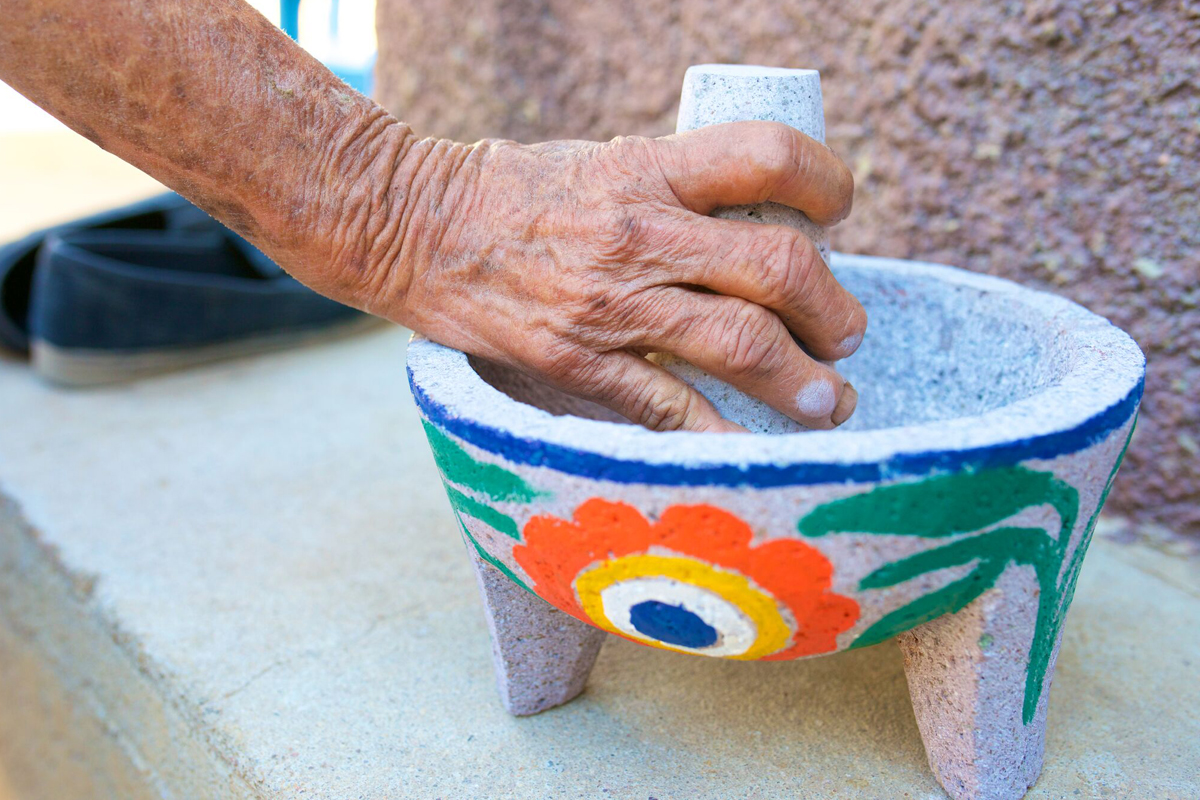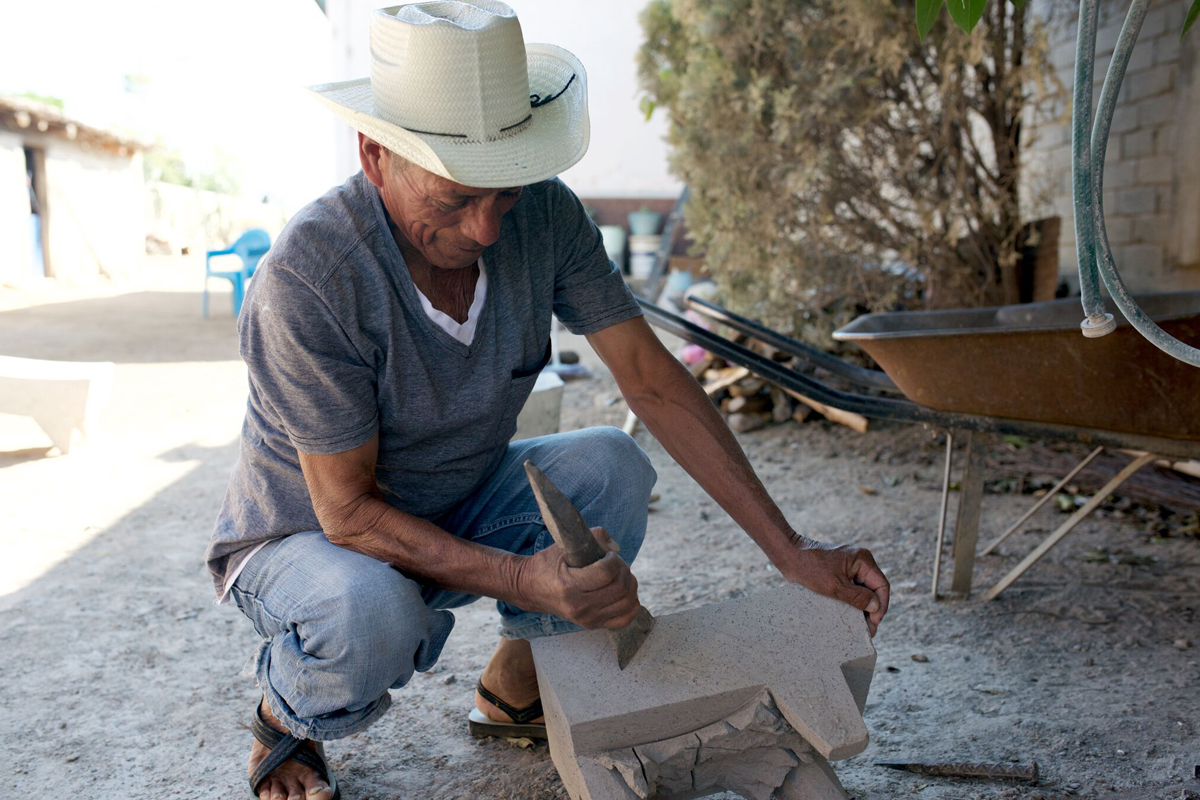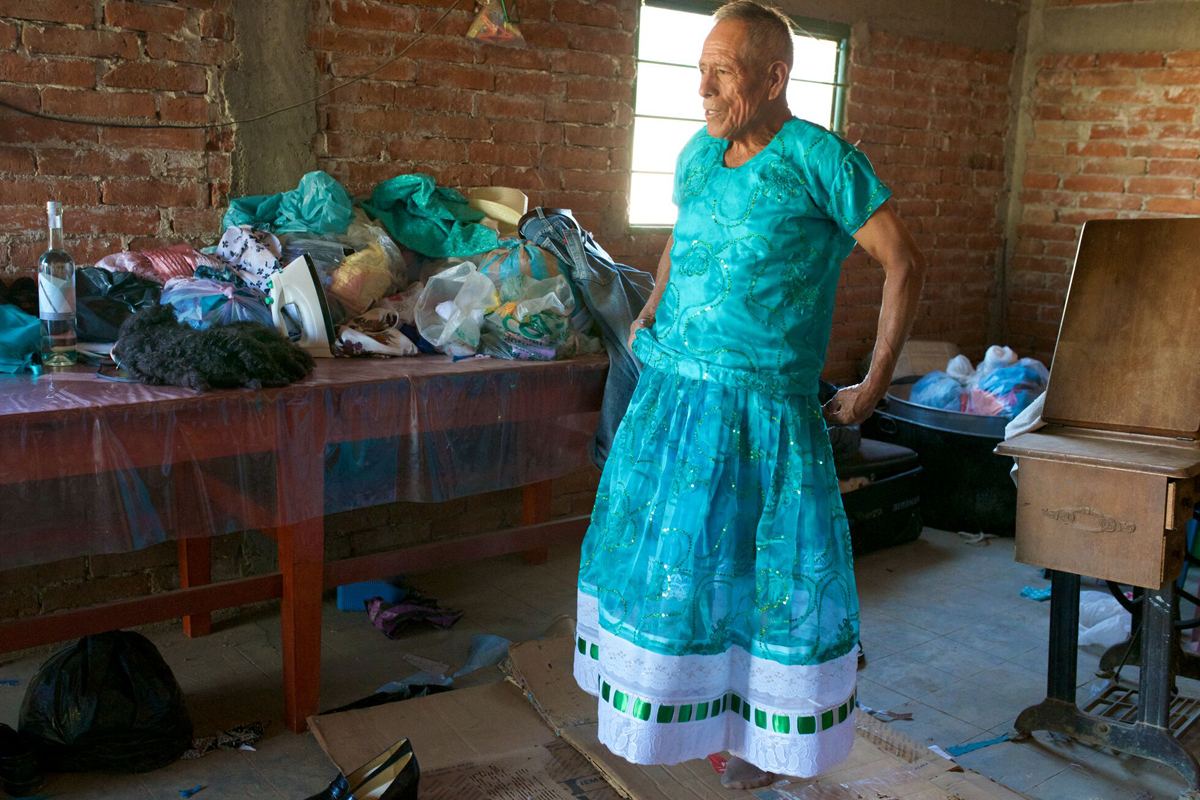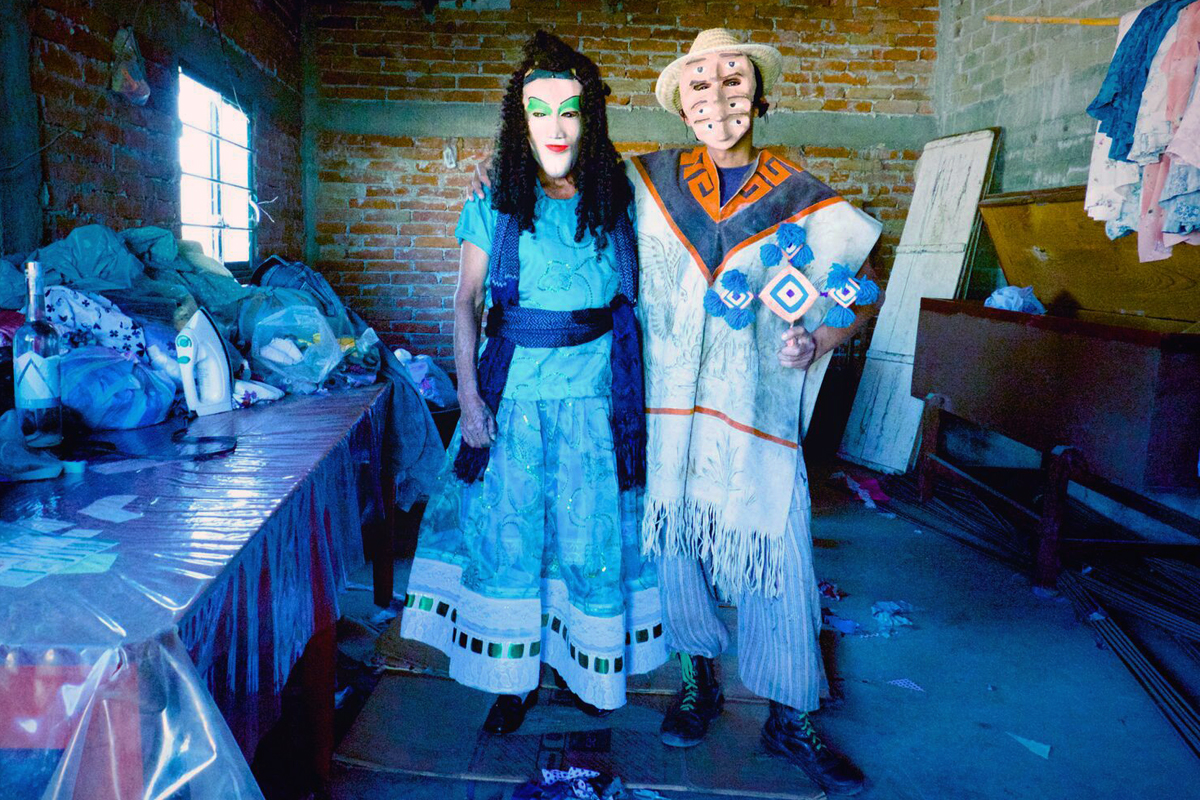Oaxacan Stonecutter and Dressmaker Tiburcio Sánchez
Exploring the dual crafts of a master maker in light of the city’s wild Carnival of Teitipac

by Max La Frenais
Maestro Tiburcio Sánchez was born in San Juan Teitipac in 1945 and has been stonecutting metates and molcajetes for the past 55 years. (A metate is a large, carved stone with a curved surface used to grind maize; a molcajete is the Mexican version of a mortar and pestle used to make salsas.) Outside in his yard, the 71-year-old sits on a small wooden stool, with a chisel and hammer, and relentlessly chips away at the stone, making the bumpy surface smooth and the stumpy legs sturdy. “People are using machines now,” he shouts over the clanking of metal on stone, “for faster finer curves.”

When we enter his storage room, however, and see the finished products, it’s hard to imagine how much finer the curves can get. Metates are at the heart of Mexico’s culinary tradition, with maize being the mainstay of people’s diets. These objects have a symbolic place in people’s homes as well as in any self-respecting traditional Oaxacan restaurant. The completed metates are carved and painted with Sánchez’s floral designs and occasionally have requested messages such as “padrinos de la boda” (godparents of the wedding) and “recuerdo de mi boda” (souvenir from my wedding) on them. There is a complex system of gift-giving in these Zapotec villages. Apparently a metate is an obligatory gift for the confirmation godparents to give to their god-daughter for her wedding day (whereas the baptism godparents give the couple a wardrobe). Sánchez’s wife Siquia Tomasa Cruz laughingly warns not to sit on the metate or one will be cursed with only being able to have daughters.

“I fell off a donkey once,” Sánchez says, when asked if he ever has problems keeping up with the physically demanding work of stonecutting and he exposes his shoulder, which is magnificently dislocated, “but I can still work!” Sánchez is something of a force of nature. Working on automaton from Monday to Wednesday Sánchez works double-speed, producing twice the number of large and small metates and molcajetes as other artisanal stonecutters. On Thursday, he carves and paints his works and by Friday everything is loaded up and taken to market to sell. However there is another side to the maestro.

On Saturdays, Sánchez makes dresses. A decade after his father taught him the ways of the stonecutting, Sánchez started teaching himself how to design and tailor clothes. When asked how he learned he replies, “En el querer de uno está todo,” meaning, “In one’s desire is all.” Then he tells us, “As if I fell in love with a girl, in this same way, sewing caught my attention.” Over time ladies from the village started bringing him dresses to be fixed and now people come from all over the region with fabric for Sánchez to wield into special garments. The fantastic array of materials found in Sánchez’s workshop are used for quince años dresses (the 15th birthday of girls being a particularly important coming out event), weddings and other special events. Perhaps the cold fire of carving perfectly formed metates has given Sánchez a special ability to tailor and stitch a multitude of intricate designs inspired from various regions of Oaxaca onto flowing skirts. One of Sánchez’s busiest times of the year is designing dresses for the Carnival of Teitipac during the season of Lent. During this week-long party, the men of the village dress up as women and parade through the town.
The maestro invited us to join the festival and although it had been a long time since he participated, he also joined in on the festivities. As Sánchez put on one of his finest dresses, styled from the colorful patterns found in the isthmus of Tehuantepec, his whole presence changed. His rugged stonecutter’s frame straightened into a graceful pose and as he put on his mask, the transformation was complete.

We joined the procession following a large brass band from one house to another in the afternoon heat. Beer was offered to everyone and slowly the most confident of the disguised men take to the various dance floors. Five hours later, on a hilltop courtyard, a hundred people danced with the maestro gliding through the crowds of villagers. The rules of conservative village life had been dutifully thrown out of the window. This culminated in ‘el cundo’ where an evil preachy figure was symbolically hung on a wooden scaffolding and then tossed to the crowd, who, as tradition states, very quickly removes his clothes.
Octavio Paz says of the Carnival of Teitipac fiesta in Mexico: “Chaos comes back and license rules. Anything is permitted: the customary hierarchies vanish, along with all social, sex, caste, and trade distinctions. Men disguise themselves as women, gentlemen as slaves, the poor as the rich. The army, clergy, and the law are ridiculed. Obligatory sacrilege, ritual profanation is committed. Love becomes promiscuity.” Sánchez used to participate every year, showcasing his dresses for an adoring public. He would wear a different dress every night and the following morning a buyer would come to snap up his design. But now he leaves it to the younger generation and apparently dressing up in a dress and a mask is even becoming popular among the women in the village.
Images by Leslie Parker











